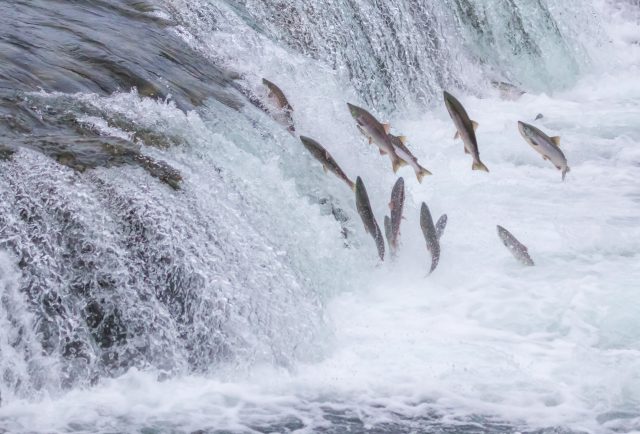This website uses cookies so that we can provide you with the best user experience possible. Cookie information is stored in your browser and performs functions such as recognising you when you return to our website and helping our team to understand which sections of the website you find most interesting and useful.
What exactly is a ‘salmon-safe’ vineyard?
Rather than signifying a wine estate that is protected from the dire threat of unruly fish, salmon-safe certification proves that a wine producer protects the water quality of its surrounding lakes, streams or rivers. db gets the lowdown.

The term ‘salmon-safe’ has been increasingly cropping up over the past couple of years, but what does it actually mean?
Put aside all notions of marauding salmon causing havoc in vineyards, and divert your attention for a moment to the potential damage caused by pesticide run-off from treated vines into nearby waterways and you’ll be getting closer to understanding what this latest sustainability buzzword is all about.
Last week, Washington’s wine industry launched a dual certification between Sustainable WA and organisation Salmon-Safe to “enhance water quality protection, wildlife habitat conservation and climate resiliency.” Its main priority is reducing vineyard runoff, and enhancing the native biodiversity around vineyard sites.
In this respect, certified producers are quite literally making life safer for salmon (and other aquatic life).
Some of the measures required for the new Washington certification include irrigation schedules that take into consideration the natural cycles of wildlife; sediment runoff prevention and making provisions for wildlife protection such as fish screens. If you’re not familiar with fish screens, they prevent fish from swimming or being sucked into an aqueduct, intake tower, dam or other diversion on a waterway.
Those wine producers with 95% certified wine grapes can feature the Salmon-Safe logo on their bottles. As well as wineries in Washington, those located in Oregon, Northern California and British Columbia may also apply for the certification.
What else can wine producers do to help restore salmon habitat?
Salmon-Safe is all about inspiring people to transform the way they care for their land in order to help Pacific salmon thrive in West Coast waterways.
It is not a new organisation – 350 vineyards have signed up to the scheme during the last 20 years or so – but due to the rising awareness of global companies and consumers that being truly ‘sustainable’ is not only limited to looking after what happens on land, the certification is becoming more prominent.
Some further measures that vineyards can put in place in order to foster a healthier environment for salmon are:
-Planting trees along rivers and streams to create shade
-Growing cover crops to prevent or control run-off
-Using natural methods to control weeds and pests (no pesticides or herbicides).
Last year, db reported that beer is being used in Oregon to help salmon ‘smell’ their way back to hatcheries where they were born in order to lay their eggs. It could prove to be an important breakthrough in how breweries dispose of their waste, and could be extended beyond Oregon to other locations where salmon populate local waterways.

